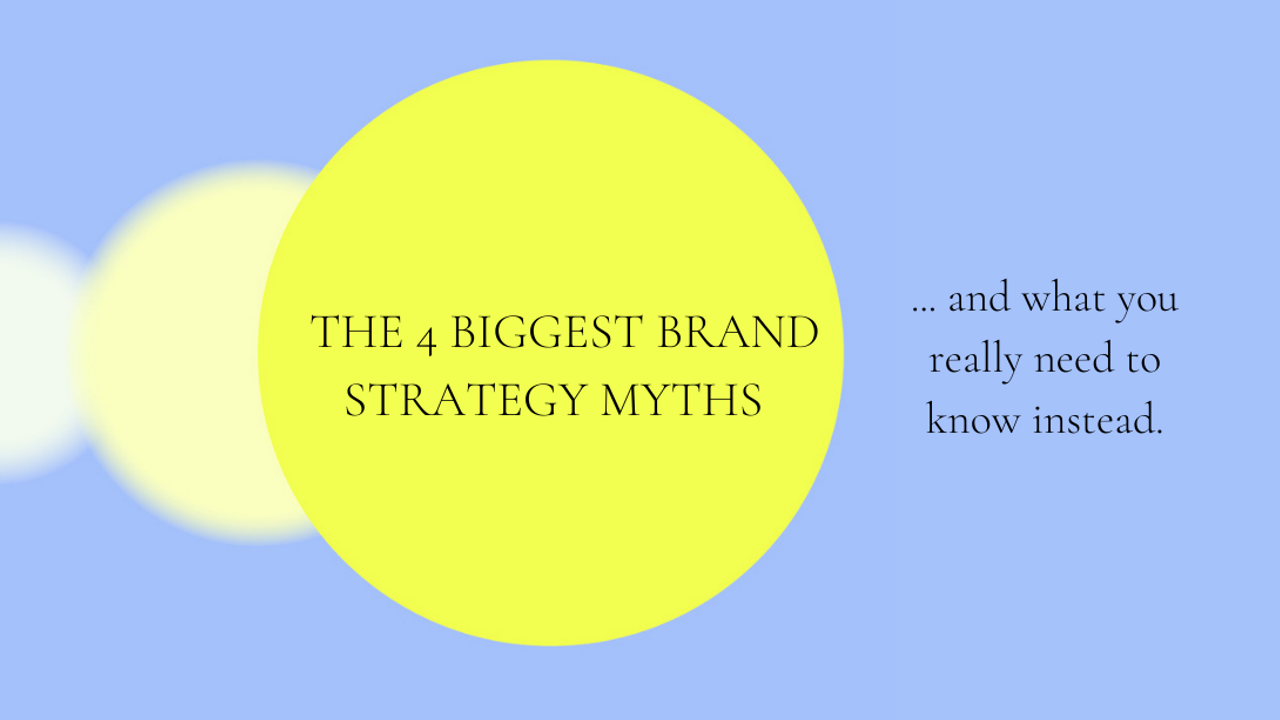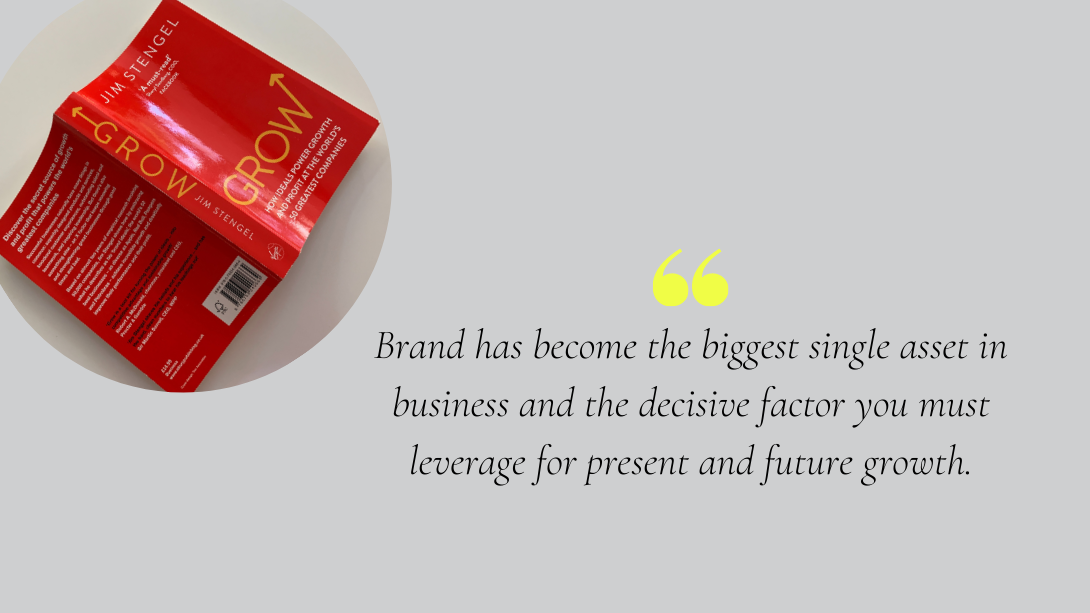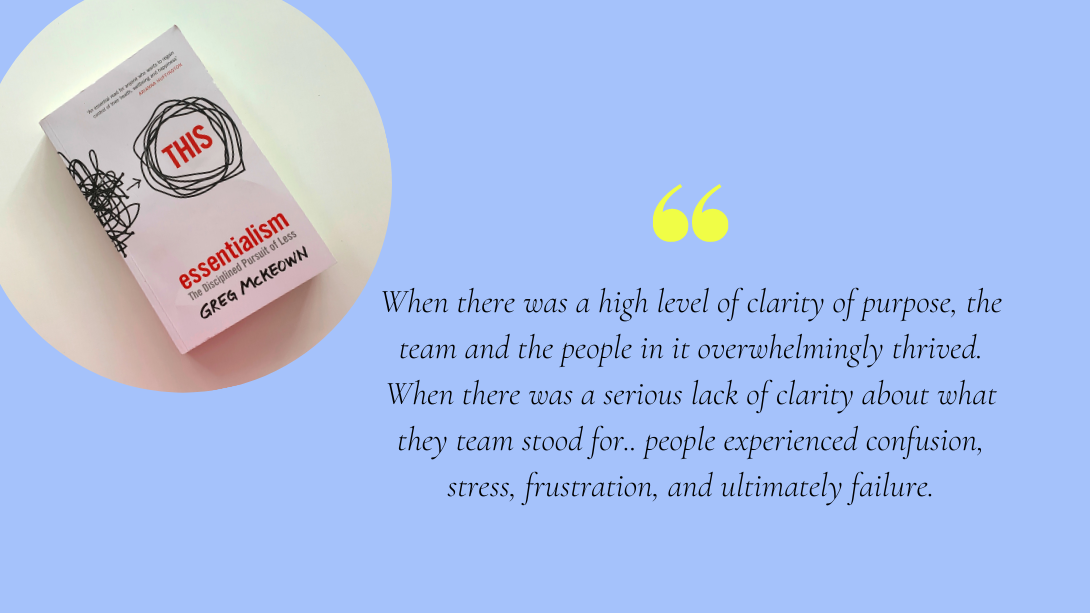The 4 biggest brand strategy myths, and what you need to know instead

After 20 years working as a brand strategist, I’ve seen and heard a lot of confusion about brand strategy.
While it’s the most desired skill CMOs are looking for this year, not many people are offering it, because it appears to be so complicated.
But brand strategy is a really powerful business tool when understood properly.
So here’s the four biggest myths about brand strategy that add to all this confusion, and what you really need to know instead, to help you understand how it can elevate your business.
BRAND STRATEGY MYTH 1: Brand strategy is just about guiding your ‘branding’
This view is what prevents solid businesses from building great brands.
Let’s start by being clear on what each of these things are.
Brand strategy is your decision on what you want to stand for: the associations you want to build about your brand in people’s minds.
‘Branding’ is the process of creating distinctive signals that help to reinforce the associations you want to build, and help your brand to be recalled in a buying situation.
These signals can be visual: your logo, colour palette, imagery, packaging, shapes, patterns, illustrations, fonts.
They can be verbal: your name and nomenclature, your tone of voice, your brandline, the language that you use. They can also be sounds – like T Mobile’s or Intel’s chimes.
Or smells – like the bespoke fragrances luxury hotels create for their lobbies.
They can even be people or characters – liked Jared Fogle was for Subway, George Clooney is for Nespresso, or the Compare The Market Meerkats.
But creating visual and verbal signals are where most brands start.
All together these signals are typically called your ‘branding’ or your ‘brand identity.’
Now it’s true that creating a brand strategy (and within it answering the question, ‘How do you want your brand to look, feel and sound?’) is a CRITICAL part of making sure that your ‘branding’ does its job.
But brand strategy is NOT just about guiding ‘branding’.
Brand strategy is really about setting the foundation for everything you do for the people who matter to your business. Whether you want to call it your north star, your focus, or, in the words of Larry Fink, “the animating force for achieving profits,” brand strategy sets the direction for all the experiences you create for customers, employees and broader stakeholders.
It guides recruitment, retention, reward and recognition for your employees. It guides innovation of new products and services. It guides customer experience, marketing, sales and ESG. Its impact on all the levers of business growth is profound.

Your brand strategy is the foundation for this.
When brand strategy just gets signed off by the CMO and passed on to a design agency you are missing out on its power to help you grow 3 times faster than competitors, to outperform competitors 3:1 in terms of customer acquisition costs, to better motivate and retain employees, and be more successful in business transformation efforts. (See the research backing this up right here).
Because brand strategy is about way more than your logo, colours and messaging. It’s about business growth.
BRAND STRATEGY MYTH 2: Brand strategy should be all about your customers
Nope. Brand strategy is not just about your customers. It’s just as much about your employees. This is THE biggest problem I see again and again in working with CEOs and CMOs to define their brand strategy. They fail to get the CHRO involved early enough – or even at all - and in turn fail to ‘operationalise’ the strategy. They don’t engage employees in the process and don’t drive it through the organization so it becomes “the way we do things around here”.
But why does this matter? Well, brand strategy is one of the three characteristics McKinsey have identified as key for a ‘future-ready company’. In their article on organizing for the future, they identify that:
“Future-ready companies share three characteristics: they know who they are and what they stand for; they operate with a fixation on speed and simplicity; and they grow by scaling up their ability to learn, innovate, and seek good ideas regardless of their origin. By embracing these fundamentals…companies will improve their odds of thriving in the next normal.”
Brand strategy is all about getting this clarity on who you are and what you stand for: creating and codifying this strong sense of purpose, meaning and culture that everyone contributes to, that creates a strong sense of belonging.
And this sense of belonging can make a huge difference to a company’s performance. McKinsey identify that,
“People long to belong, and they want to be part of something bigger than themselves. Companies that fixate only on profits will lose ground to organizations that create a strong identity that meets employees’ needs for affiliation, social cohesion, purpose, and meaning.”
This is backed up by a lot of data that shows that a clear brand strategy leads to people and teams thriving. Like McKinsey’s research that found that people who say they are “living their purpose” at work are four times more likely to report higher engagement levels than those who say they aren’t.
And Greg McKeown’s data from more than 500 individuals asked about their experience on over 1000 teams showed:

So your brand strategy development process has to consider the role and input of employees– and the CHRO – right from the beginning. It’s just as important as reaching out to your customers.
BRAND STRATEGY MYTH 3: You can create a strong brand strategy in an internal workshop
I’d love to tell you this was true, since it would save you a lot of time, right? But anyone giving you that advice has a limited and limiting perspective on what it takes to create a successful brand strategy. There are two things wrong with this statement.
Firstly, you can’t just look internally for the answers.
Secondly, you can’t write a good strategy in a workshop.
There are 3 pieces of work you have to do to get the insights you need to create a strong brand strategy. One of them is to look internally, to engage leadership and employees, to research the brand heritage and founding story, and often, but not always, to run a workshop with the leadership team. But the purpose of this workshop is to get fodder (not answers) to your strategy. Group-writing the answer never works. Crafting the strategy is the job after the workshop.
And there are 2 other critical pieces of insight you need that require you to look externally. The first is customer insight; you need to conduct some customer research. The second is competitor insight. You need to conduct a competitor brand strategy audit to identify what ideas you need to avoid - ones that are so strongly associated with a competitor that they won’t help you build distinctive associations in the minds of your customer about your brand.
BRAND STRATEGY MYTH 4: Brand strategy is really difficult. You need a masters degree to learn how to do it
I’ve had so many people write to me asking whether they should take an MA or MBA to learn how to do brand strategy. Absolutely not, is my honest answer. But nor should you just take a course that gives you a load of theory but doesn’t help you put it into practice, as so many of the brand strategy online courses out there seem to do.
It’s why I spent most of 2020 taking all of the practical tools, research templates, world-class examples, case studies and implementation plans I’ve worked on for 20 years and put them into Brand Strategy Academy.
I wanted to create a course to equip you with the clarity, inspiration, support and tools you need to know EXACTLY how to do brand strategy, for any client, in any industry. I wanted to price it to make it accessible so that freelance strategists and marketers, and start-up and small business owners can learn how to do it in the right way, learning from my 20 years working on some of the world’s best brands.
I use a simple model that works for any brand in any industry, that avoids all the unnecessary and confusing branding jargon out there, using instead a set of easily understood questions that make sense to business leaders and employees, not just marketers. I based it on my 20 years experience AND my 8 month study of the brand strategies of the 181 world’s most valuable brands to ensure that it truly works.
Hope to see you in there!

Get brand strategy smarter in 5 minutes a week
Join our weekly newsletter. No fluff. Sent Fridays.
By clicking the button, you agree to receive the 'Brand Strategy Smarter' newsletter and marketing emails from Brand Strategy Sarah about our products and services. Unsubscribe at any time.


